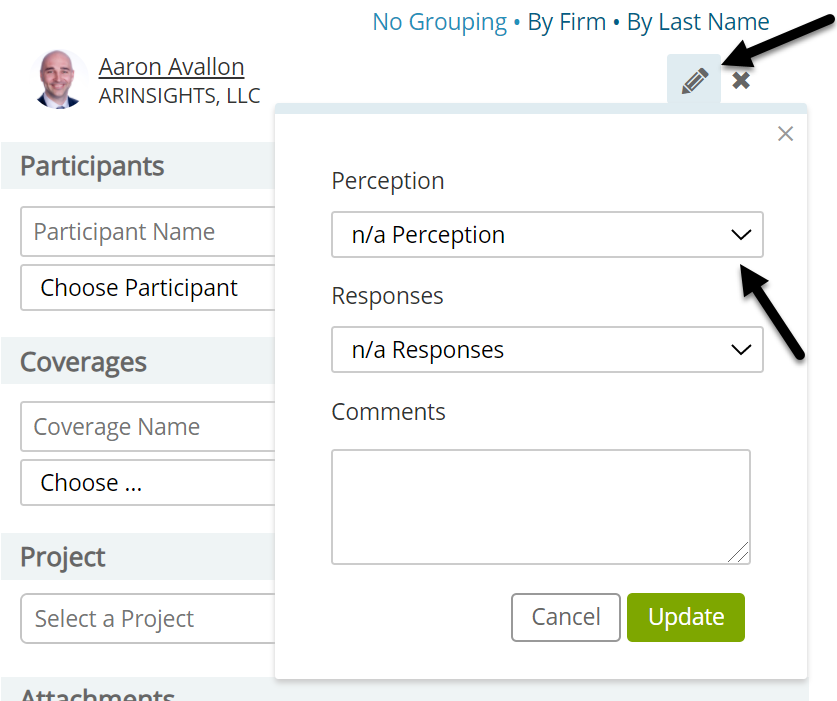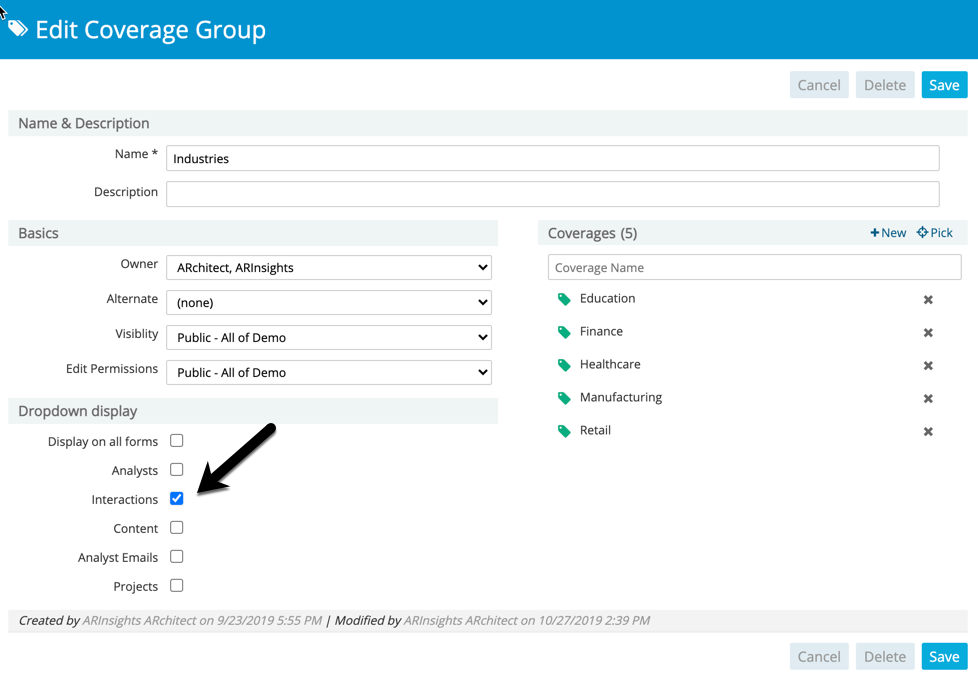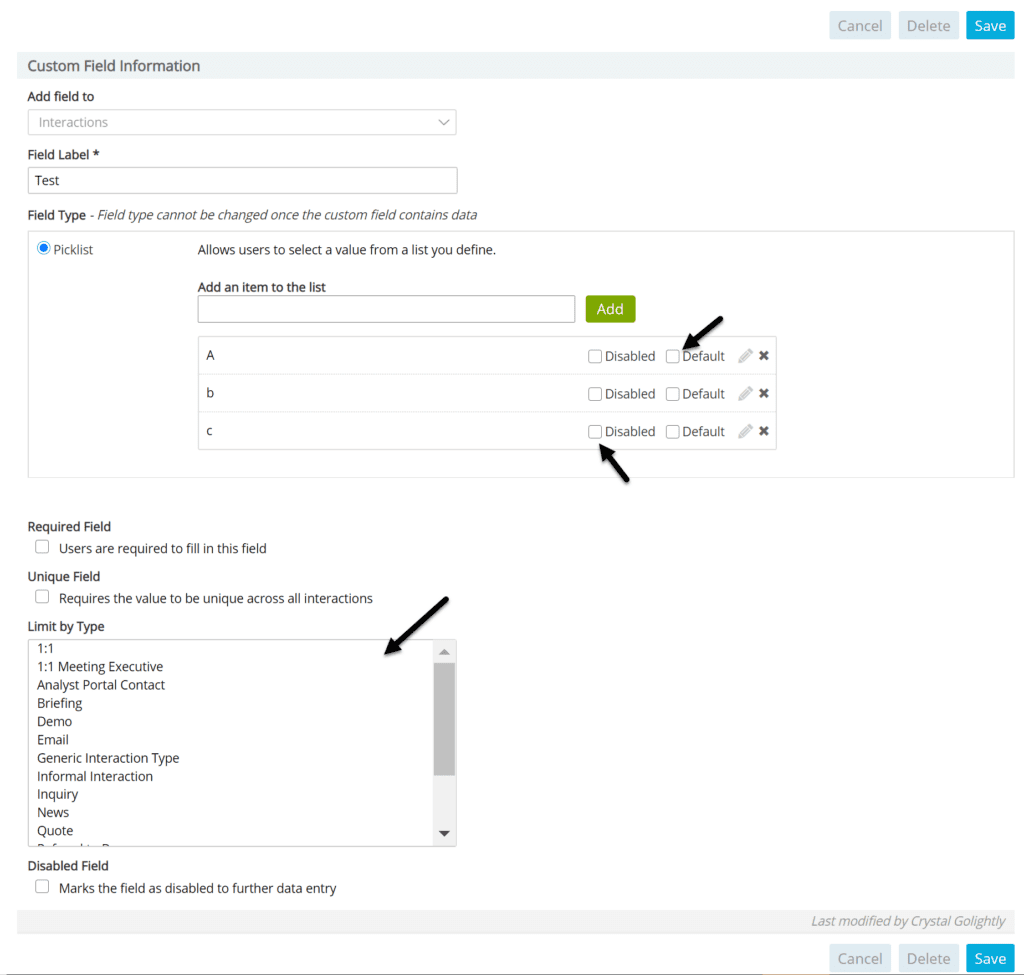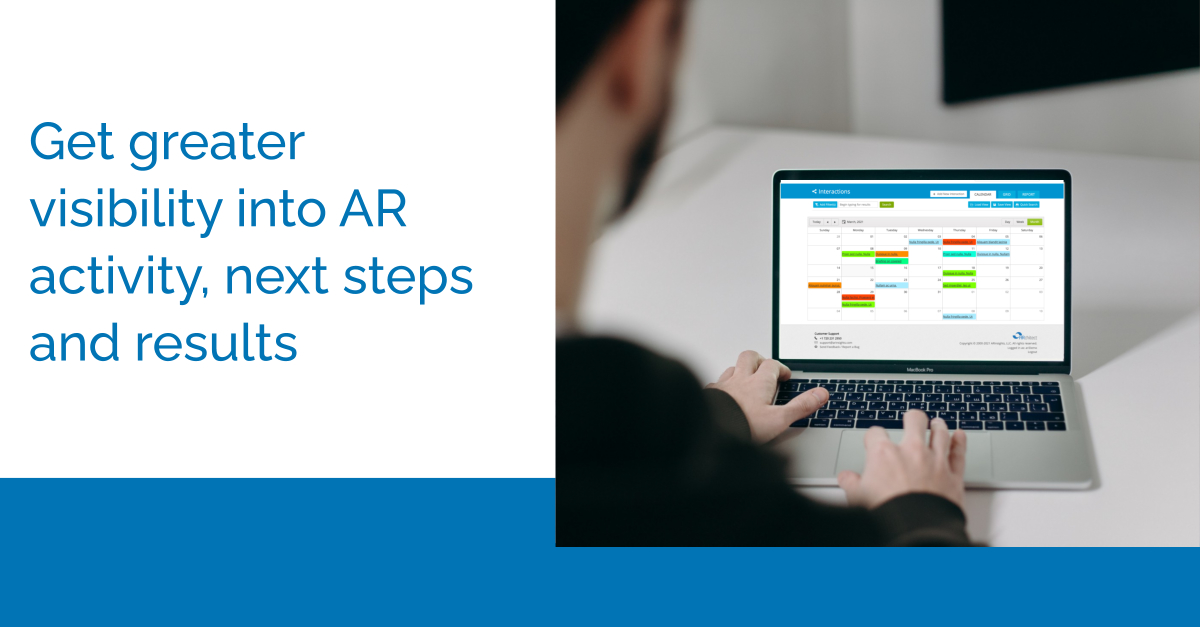Keeping track of all your Interactions with analysts and teammates in one centralized tool will help you to drive greater visibility of your program’s efforts and easily share knowledge from your top influencers. In this episode of the Learning Series, our experts focus on Interaction best practices, using customizations to track insights and internal calls, saving time with productivity tools and using reports for quick views of your activity.
Follow along to learn how you can use Interactions more effectively.
Interaction Best Practices
Entering great quality Interactions can be vital in understanding the history of your relationships and what’s working within your analyst relations (AR) program. Adding interactions is pretty simple in ARchitect. There are a few places where you can manually add them, like the “Add New Interaction” button on the Interactions menu.
When entering an interaction, there are some standard fields and auto-populated items that can add value and save you time. For example, when entering the time that your interaction is taking place, the end time will auto-populate to an hour later.
In addition, a standard field that many are unaware of is the analyst Perception field, which lets you measure the analyst’s sentiment on the topic. This measurement is very valuable because AR teams can get an idea on whether their messaging or outreach is working by looking at how analyst perception changes over time. To visualize this, you can use a Perception report or your Dashboard Heat Map.
To add an analyst’s Perception to an Interaction, simply edit your Interaction and click the pencil icon next to the analyst’s name and select their perception rating.

Customizing Interactions to Fit Your Needs
Interaction standard fields were built to capture what general analyst relations (AR) teams need from an analyst touch. If there is information that’s not in a standard field that you specifically need to include, we can customize your Interactions to capture it and even report on it!
Two common customization options are adding Interaction types and customizing Coverages for easy selection.
If you are site administrator, you can add Interaction Types by hovering over Site > Site Admin > Interaction Types on the menu. Then, you can easily add new Interaction Types, assign a color to clearly indicate meeting types on your calendar and add a description. To keep Interaction Types organized, try to keep the options between 6-12 meeting types and use the inactive button if an Interaction Type is no longer needed, rather than delete it. To track internal calls, you can create an Interaction Type named “Internal” or “Prep” to allow for reporting and filtering against this type.
To customize the coverage choices on an Interaction, go to Site > Site Admin > Coverages > Coverage Groups. Here, you can click into one of your coverage groups and check the box that displays the group on Interactions. This customization can make adding coverages a lot easier if you have a list of options already standardized for you and your teammates. Coverages in ARchitect are the coverages as defined by the analysts research coverages but you can also use them to identify verticals, products, or any other tags you would like to associate with the Interaction.

Now that we’ve covered standard fields, there are also custom fields that you can create from scratch and pull into your reports. Because every team is different, custom fields allow you to modify ARchitect to track information that is unique to your project, team, or process. Some common examples of custom fields are Insights, Key Takeaways or Customer Reference. When creating your custom field, you can also decide when you want it to show up based on the Interaction type.

Speed Up Entry with Productivity Tools
Now that you’ve designed your own Interaction layout, there are a few ways to get your Interactions into ARchitect faster with the following productivity tools:
- Dashboard Quick link: On the dashboard, you can now scroll over an analyst and add an Interaction by hitting the “Add Interaction” button on the drop down.
- Outlook Add-In: Stay tuned! We are rolling out a new Outlook Add-In compatible with Gmail and Mac environments at the end of this month. For now, you can download the current Outlook Add-In.
- Smart Email Capture: One of the fastest ways to enter Interactions into ARchitect is by forwarding emails and invites to architect@arinsights.com. By forwarding them, our smart email capture will add them to your site dynamically. If needed, you can then go into ARchitect and edit them.
- Bulk Updates within ARchitect: Once your Interactions are captured in ARchitect, you may have some cleaning up to do (correcting the Interaction type, assigning to a teammate or project, or adding to an analyst group). You can do this by using one of our bulk updates on the Interaction list view, which are located at the bottom right side.
Reports to Bring It All Together
Lastly, you can visualize the results of your AR program with an Interaction report. Select between five different types of reports:
- Interaction Custom Report: Use this report when you need a list view of all of your Interactions, but only want to see fields of your choosing, including custom ones.
- Interaction Detail by Analyst: If you need a list view of analysts you’ve interacted with, analyst comments, perception, and firm, select this report type.
- Interaction Gap Report: This report can be useful to show the windows available when scheduling out your program’s time slots for analyst days. If scheduling is needed on a larger scale, check out our Event Manager to schedule across multiple days.
- Interaction Perception: Plot out all the perceptions you tracked of your key analysts to easily view how their opinions have changed over time. Get an even better understanding via the Dashboard.
- Interaction Summary: A fan favorite, this report is excellent for visualizing summaries of your Interactions. One common report to create shows the Interaction counts across firms or key analysts.
When delivering key information to your stakeholders about the progress of your analyst relationships and your program, building out and quickly entering a customized Interaction can be very useful to pull insightful reports in a flash. If you need any help setting up your Interactions or discuss their functionality further, contact our support team at support@arinsights.com.



